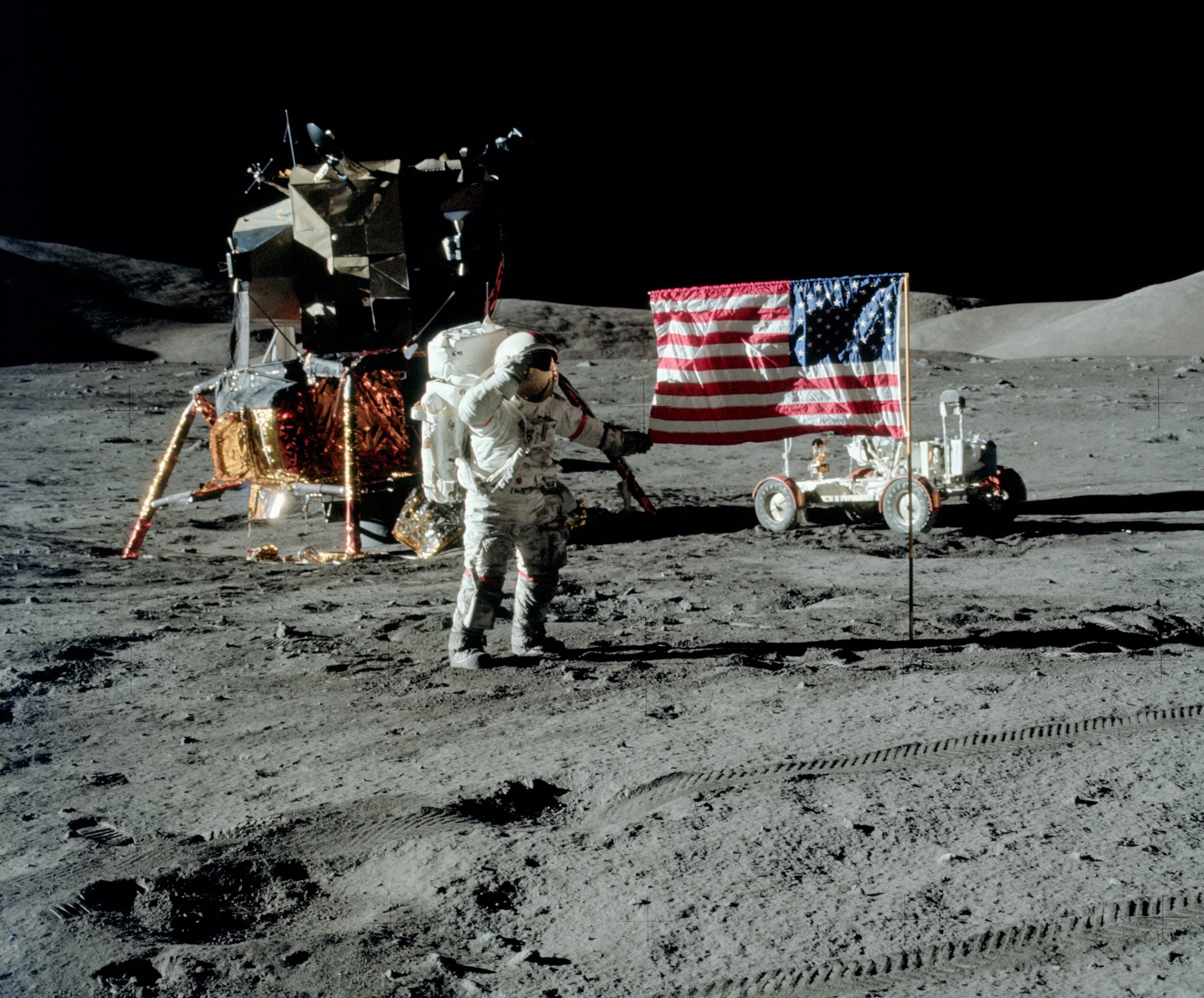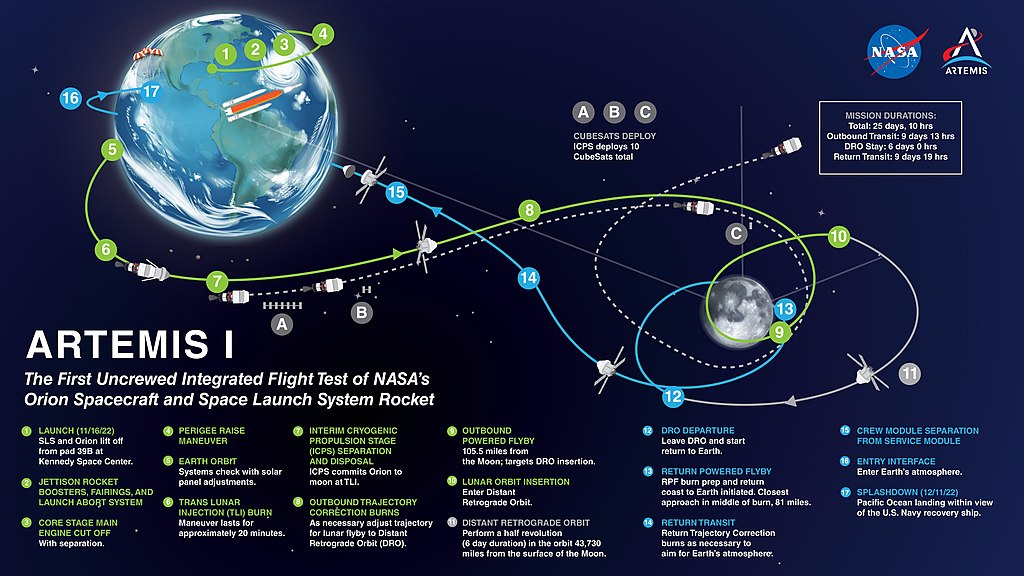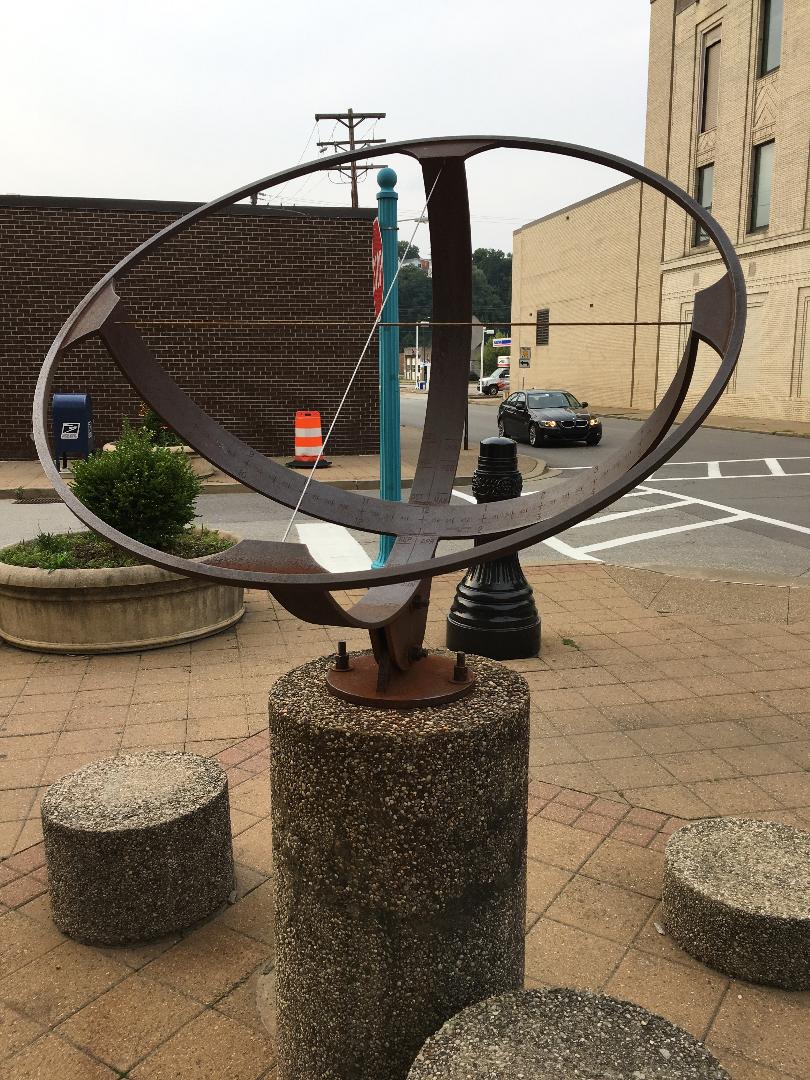
This diagram shows the position of the Earth, in relation to the Sun,
at the time of the Winter Solstice, as well as the other solstice and
equinoxes of the year, in Earth's Northern Hemisphere.
[Graphic Source: ©1999,
Eric G. Canali, former Floor Operations Manager of the original Buhl
Planetarium & Institute of Popular Science (a.k.a. Buhl Science
Center ), America's fifth major planetarium and Pittsburgh's science & technology museum from 1939 to
1991, and Founder of
the South
Hills Backyard Astronomers amateur astronomy club; permission granted
for only non-profit use with credit to author.]
By Glenn A. Walsh
Reporting for SpaceWatchtower
The season of Winter, in the Northern Hemisphere of Earth, begins at the moment of the Winter / December Solstice, Wednesday Afternoon, 2022 December 21 at 4:48 p.m. Eastern Standard Time (EST) / 21:48 Coordinated Universal Time (UTC). This moment also marks the astronomical beginning of the Summer season in the Southern Hemisphere.
In Meteorology (Weather Science),
the convention is to start a season on the first day of a calendar
month. So, Meteorological Winter runs from 2022 December 1 to 2023 February 28.
This year's Winter Solstice marks the 54th anniversary of the launch of Apollo 8, the first human mission to the Moon. Apollo 8 astronauts Frank Borman, James Lovell, and William Anders launched from Cape Canaveral, Florida on 1968 December 21 at 7:51 a.m. EST / 12:51 UTC, entered lunar orbit early on the morning of Christmas Eve, orbited the Moon ten times, and returned to Earth on 1968 December 27.
Today marks the 50th anniversary (1972 December 19) of the return to Earth of the last human mission to the Moon, Apollo 17. Apollo missions 18, 19, and 20 had been cancelled, primarily due to budget cuts. Artemis I, NASA's first test mission for returning humans to the Moon after 50 years, landed in the Pacific Ocean a week ago, on 2022 December 11.
Almost exactly 24 hours after the
Winter Solstice will mark the peak time for the annual Ursid Meteor
Shower. This meteor shower peaks Thursday Afternoon, 2022 December 22
at 5:00 p.m. EST / 22:00 UTC (of course, meteor showers can only be viewed between local sunset and local sunrise, best viewed between local Midnight and local dawn when Earth is rotating into the meteor shower).
Winter Solstice
In etymology, the word solstice comes from the Latin terms sol (Sun) and sistere (to stand-still). In ancient times, astronomers / astrologers / priests recognized that one day of the year when the Sun would appear to reach its lowest point in the sky for the entire year. The motion of the Sun's apparent path in the sky (what is known astronomically today as the Sun's Declination) would cease on this day, and the Sun would appear to stand-still, before reversing direction.
With our Gregorian Calendar, this usually occurs on, or very close to, December 21. In ancient times, when people used the Julian Calendar, the Winter Solstice was on, or very close to, December 25, what we now know as Christmas Day. Mid-Winter festivals, at the time of the Winter Solstice, were common in ancient times. Instead of competing with these traditions, the early Roman Catholic Church Christianized the Winter festivals by observing the birth of Jesus Christ on December 25 (the actual birth date of Jesus was probably in late Summer or early Autumn).
Today, we know that, while the Sun does have motions (the Sun rotates on its own axis about once every 27 Earth days; our Solar System revolves around the center of the Milky Way Galaxy once every 225 million-to-250 million Earth years), it is actually the motion of the Earth, tilted on its axis (Mean Obliquity) currently ~23.43631 degrees / 23 degrees, 26 minutes, 10.7 seconds (at the North Latitude this is known as the Tropic of Cancer or Northern Tropic, while at the South Latitude this is located at the Tropic of Capricorn or Southern Tropic) from the plane of our Solar System while revolving around the Sun, that causes the Earth's seasons.
Hence, as the Earth arrives at the point in its orbit around the Sun, where the south polar axis is most directly inclined toward the Sun (thus, the Sun appears at its lowest point for the year in the Northern Hemisphere sky) around December 21, this marks the Winter Solstice in the Northern Hemisphere (and the Summer Solstice in the Southern Hemisphere).
Alternately around June 21, the Summer Solstice marks the beginning of Summer in the Northern Hemisphere (and this date also marks the Winter Solstice, which is the beginning of Winter in the Southern Hemisphere) as the Earth reaches the point in its orbit where the north polar axis is most directly inclined toward the Sun.
The day of the December Solstice is the only time of the year when the Sun reaches the point of Local Solar Noon at the South Pole. Conversely, it is also the only time of the year when Local Solar Midnight occurs at the North Pole. And, of course, it is the reverse during the June Solstice: the only time the Sun reaches the point of Local Solar Noon at the North Pole and the only time when Local Solar Midnight occurs at the South Pole.
Although the Winter months in the Northern Hemisphere are known for the year's coldest weather, the Earth is actually at the point in its orbit closest to the Sun (astronomically known as the point of Perihelion) on or very near January 2. The Earth is farthest from the Sun, each year shortly after the Northern Hemisphere's Summer Solstice, on or very near July 5 (the point of Aphelion). Over a half-year's time between Earth Perihelion and Earth Aphelion, the difference in distance between the Sun and Earth varies by about 3.2 million statute miles / 5.1499008 million kilometers.
This year, Earth Perihelion will occur
on Wednesday Morning, 2023 January 4 at 11:17
a.m. EST / 16:17 UTC. At that moment, Earth will be the closest to
the Sun for the whole year: 91,403,034 statute miles /
147.10 million kilometers. This year's Earth Aphelion: Thursday Afternoon, 2023 July 6 at 4:06 p.m. EST / 21:06 UTC - 94,506,364 statute miles / 1.5209 million kilometers.
Solar radiation, and hence heat from the Sun, to warm an Earth hemisphere depends on the length of daylight and the angle of the Sun above the horizon. Earth receives about 7 per-cent more solar radiation from the Sun during the time of Earth Perihelion in January, than at the time of Earth Aphelion in July. However, the tilt of the planet's axis toward the Sun determines the additional and more direct solar radiation received by a planet's northern or southern hemisphere, and hence, the warmer season of the respective hemisphere.
The Earth's Perihelion in January, and Aphelion in July, are due to the elliptical nature of the Earth's orbit around the Sun. Perihelion and Aphelion would not occur if the Earth's orbit was a true circle.
Since the Earth is
closest to the Sun near the beginning of the Northern Hemisphere's
Winter Season, the Earth, then, moves faster in its orbit around the
Sun than it moves in July, making the Northern Hemisphere's Winter a
shorter season than Summer. Winter will last for only 89 days, while
this past-Summer lasted nearly 93 days. This is one of the observed
consequences of Johannes Kepler's Laws of Planetary Motion, which he
published at the beginning of the 17th century.
The day of the Winter Solstice is known as the “shortest day of the year” and the “longest night of the year” as the Sun shines on the Northern Hemisphere for the shortest length of time for the entire year, on this day. For this reason, Homeless Persons' Memorial Day is commemorated on December 21.
Since
the Summer Solstice in June, the number of daylight hours have slowly
diminished each day, with the night-time hours progressively increasing
each day. This has benefited astronomers (to view planets, stars, and other celestial phenomena),
amateur / ham radio operators (to communicate with other ham operators
around the world), and long-distance (DX) radio enthusiasts (to receive
AM / medium-wave and short-wave radio stations from around the country
or around the world), who need the lack of solar radiation to ply their
respective craft. Once we reach the Winter Solstice, the number of
daylight hours will, now, slowly increase each day, with the night-time
hours declining each day--until, once again, this reverses on the Summer
Solstice.
Interestingly, the climate of a locale in the Southern Hemisphere is, on average, slightly milder than a location at the same latitude in the Northern Hemisphere, because the Southern Hemisphere has significantly more ocean water and much less land. Water warms-up and cools-down more slowly than does land. The only exception is the Antarctic Continent, which is colder than the Northern Hemisphere's Arctic region, possibly because most of the Arctic region is covered with water (although, often frozen water on the surface, but liquid water beneath the ice) while Antarctica is mostly a land mass.
On the Winter Solstice, the Sun appears (from Earth's perspective) to be in the constellation Sagittarius—that is, if you could view the stars behind the Sun on the Winter Solstice, you would see the stars of Sagittarius. Previously, just a few days earlier, the Sun had appeared to be in the constellation Ophiuchus. The change, when the Sun appeared to move from Sagittarius to Ophiuchus, occurred on December 17.
However, a couple thousand years ago, the Sun would have appeared to be in the constellation Capricornus during the Winter Solstice. And, about 150 years from now, the Sun will appear to be in the constellation Ophiuchus during the Winter Solstice. The names Tropic of Cancer and Tropic of Capricorn were coined in the last centuries B.C., when the Sun would appear in the Constellation Cancer the Crab on the June Solstice and in the Constellation Capricornus the Horned Goat on the December Solstice.
This apparent change is known as Precession of the Equinoxes or Axial Precession. This is a slow “wobble” of the Earth's axis, which causes the background stars or constellations that the Sun appears in to change over an approximately 25,771.5 year-cycle. This cycle runs through 12 traditional constellations of the zodiac, plus the constellation Ophiuchus, comprising the constellations along the ecliptic.
Precession also causes the North Star to change over the approximately 25,771.5 year-cycle. Today, Polaris is known as the North Star, which has been used for ages by navigators. However, at the time Egypt constructed the Great Pyramid, architects used Thuban, the North Star at that time, to align the pyramid. And, about 12,000 years from today, Vega will be the North Star.
Although for the year, December 21, for Earth's Northern Hemisphere, has the fewest number of daylight hours and the most night-time hours, it may be surprising to some that this date does not have the latest sunrise time nor the earliest sunset time for the year. This is also true for the June 21 solstice in the Southern Hemisphere.
Depending on a location's latitude, the latest sunrise time actually occurs a few days after the respective solstice, while the earliest sunset time occurs a few days before the day of the solstice. These time differences are due to, what scientists call, the Equation of Time (the Equation of Time is graphically displayed on most world globes as a figure “8”, known as the Analemma).
The U.S. Naval Observatory in Washington defines the Equation of Time: "the Equation of Time is the difference apparent solar time minus mean solar time". Apparent solar time, which is somewhat variable, directly tracks the motion of the Sun and can be measured using a sundial. Mean solar time measures solar motion if the Sun's motion was uniform; it is measured by an accurate clock which does not vary in time measurement.
The Sun's motion does vary throughout
the year. Hence, the latest sunrise time and the earliest sunset time
do not occur on the actual day of the solstice.
Ursid Meteor Shower
Almost 24 hours after the Winter Solstice comes the peak of the annual Ursid Meteor Shower, which actually begins on December 17 and usually lasts about a week ending December 24, 25, or 26. The Ursids seem to comprise a narrow stream of debris originating from Comet Tuttle. Hence, it is difficult to see Ursid meteors outside of a 12-hour window before and after the peak, where possibly 12 meteors per-hour could be seen, under ideal conditions.
The Ursid Meteor Shower is so-named because most meteors appear to radiate from a point near the Star Beta Ursae Minoris (apparent meteor shower radiant) in the Constellation Ursa Minor (better known as the asterism the “Little Dipper”), which is the brightest star in the bowl of the Little Dipper. Some people call these meteors “Ursids,” in an attempt to emphasize that their apparent radiant is Ursa Minor, not Ursa Major (the asterism the “Big Dipper”).
However, you should not, necessarily, be looking only at the Little Dipper when looking for meteors in this shower. Meteors can appear in any part of the sky at any time (although a meteor's tail may tend to point back toward the radiant).
Of course meteor showers, like all celestial observations, are weather-permitting. If there are more than a few clouds in the sky, meteors will be much more difficult to find. Clear skies are not always available in the skies of late Autumn and early Winter. And, it is always best to get away from city lights, for the opportunity to see the smaller, dimmer meteors. A bright Moon in the sky will also make it more difficult to view the smaller, dimmer meteors. As always, the best time to view any meteor shower is between local midnight and local dawn, when the Earth is actually rotating into the stream of meteoric debris.
Binoculars and telescopes are not very useful for finding meteors. Meteors streak across the sky in a very short period of time, far too short to aim binoculars or a telescope. So, the best way to view a meteor shower is to lie on a blanket or beach towel on the ground, or use a reclining a chair, outdoors in an area with a good view of the entire sky (with few obstructions such as buildings, trees, or hills), and keep scanning the entire sky.
So, if you go out to see the Ursid Meteor Shower, start looking for meteors around local midnight, or perhaps a little later. Make sure you have a good site where you can see most of the sky, and that sky is relatively clear. Be sure to dress properly for the early morning temperatures, now that we are at the very beginning of Winter.
And, you want to
go out ahead of time, before you actually start looking for meteors,
to get your eyes accustomed to the dark sky. Dark-adapting your eyes
for meteor-watching could take up to a half-hour.
Internet Links to Additional Information ---
Winter Solstice:
Link 1 >>>
http://scienceworld.wolfram.com/astronomy/WinterSolstice.html
Link
2 >>> http://en.wikipedia.org/wiki/Winter
Solstice:
Link >>> http://en.wikipedia.org/wiki/Solstice
Popular
Winter Planetarium Sky Shows Shown at Pittsburgh's original Buhl
Planetarium and Institute of Popular Science (1939 to 1991),
including full scripts of each show:
The Star of Bethlehem
>>>
http://buhlplanetarium3.tripod.com/skyshow/bethlehem/
The
Stars of Winter >>>
http://buhlplanetarium3.tripod.com/skyshow/winter/
Calendar
Formats ---
Gregorian
Calendar: Link >>>
http://en.wikipedia.org/wiki/Gregorian_calendar
Julian Calendar: Link >>>
http://en.wikipedia.org/wiki/Julian_calendar
Ursid Meteor Shower: Link >>> http://en.wikipedia.org/wiki/UrsidsA
Homeless
Persons' Memorial Day:
Link >>>
http://nationalhomeless.org/about-us/projects/memorial-day/
Related Blog-Posts ---
"LIVE-STREAM: NASA Artemis Returns Sun., 50 Years After Last Apollo Moon Flight." Fri., 2022 Dec. 9.
"Live-Stream Web-Cast: NASA Artemis I to Orbit Moon - Launch Wed. 1:04 a.m."
Tue., 2022 Nov. 15.
Link >>> http://spacewatchtower.blogspot.com/2022/11/live-stream-web-cast-nasa-artemis-i-to.html
American Lunar Society Founder on 50th Anniversary: 1st Humans Orbit Moon."
Source: Glenn A. Walsh Reporting for SpaceWatchtower, a project of Friends of the Zeiss
Monday, 2022 December 19.
Like This Post? Please Share!
More Astronomy & Science News - SpaceWatchtower Twitter Feed:
Link >>> https://twitter.com/spacewatchtower
Astronomy & Science Links: Link >>> http://buhlplanetarium.tripod.com/#sciencelinks
Want to receive SpaceWatchtower blog posts in your in-box ?
Send request to < spacewatchtower@planetarium.cc >.
gaw
Glenn
A. Walsh, Informal Science Educator & Communicator
(For more than 50 years! -
Since Monday Morning, 1972 June 12):
Link >>> http://buhlplanetarium2.tripod.com/weblog/spacewatchtower/gaw/
Electronic Mail: < gawalsh@planetarium.cc >
Project Director, Friends of the Zeiss: Link >>> http://buhlplanetarium.tripod.com/fotz/
SpaceWatchtower Editor / Author: Link >>> http://spacewatchtower.blogspot.com/
Formerly
Astronomical Observatory Coordinator & Planetarium Lecturer,
original Buhl Planetarium & Institute of Popular Science (a.k.a.
Buhl Science Center), America's fifth major planetarium and Pittsburgh's
science & technology museum from 1939 to 1991.
Formerly Trustee,
Andrew Carnegie Free Library and Music Hall, Pittsburgh suburb of
Carnegie, Pennsylvania, the fourth of only five libraries where both construction and endowment funded by famous industrialist & philanthropist Andrew Carnegie.
Author of History Web Sites on the Internet --
* Buhl Planetarium, Pittsburgh: Link >>> http://www.planetarium.cc Buhl Observatory: Link >>> http://spacewatchtower.blogspot.com/2016/11/75th-anniversary-americas-5th-public.html
* Adler Planetarium, Chicago: Link >>> http://adlerplanetarium.tripod.com
* Astronomer, Educator, Optician John A. Brashear: Link >>> http://johnbrashear.tripod.com
* Andrew Carnegie & Carnegie Libraries: Link >>> http://www.andrewcarnegie.cc
* Other Walsh-Authored Blog & Web-Sites: Link >>> https://buhlplanetarium.tripod.com/gawweb.html



